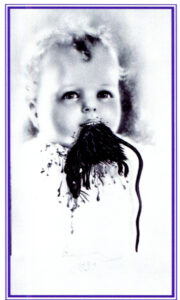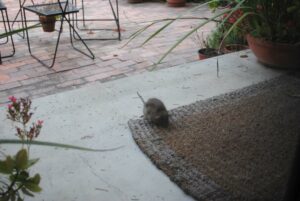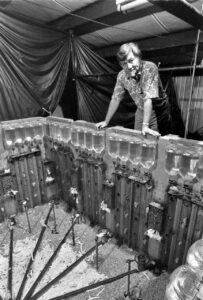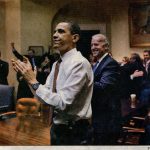
North Tower of former city wall, Valencia, Spain
“Town air maketh the man free” was an expression circulating in the late Middle Ages as cities became full-blown, expanding in number and greater importance. That sentiment obviously purposed to comfort city dwellers, and with good reason. The town offered a security the hinterland lacked. Villages were prey to every brand of marauder, from Mongolian braves and Vikings to errant knights. Woods full of thieves and robbers, not to mention ghosts and evil spirits. Besides offering a cite of safe exchange, cities, fortified by stone walls and perched on a hilltop, offered a freedom from the mayhem.
Yet early in human history a folk theme formed around tales on the subject of city life versus life in the country, personified as city mouse and country mouse. The theme is as old as Aesop. His version still offers a prime example. As it goes, a visiting cousin mouse, a city slicker, is unimpressed by his country cousin’s rude fare of bacon and beans, cheese and bread. So he entices the country cousin to visit him in the city where they sneak into a dining room and a table filled with the leavings of a fine feast. But just as they were gorging on jellies and cakes, a chorus of fierce growls announced the entrance of two huge mastiffs pouncing upon country mouse and city mouse alike.
Barely escaping, the country mouse bids “Goodbye, cousin.”
“What! Going so soon?”
“Yes,” replied the country bumpkin. “Better beans and bacon in peace than cakes and ale in fear.”
Almost every variant of the tale, told in different times and tongues, relates the same theme: The city offers more to chew on, but it also holds more possibilities of being chewed upon. Predictably, the country relation retires to the safety of his rural environment.
☞ In Aesop’s environment of ancient Greece, city and country roles had already been defined. An unfortunate individual unlucky enough to live outside the polis was known as idiotikos, a yokel, a clear attitude of disdain for life outside the walls of a burgeoning city with all its plenitude of goodies and entertainments. How much different is it now? With city cognoscenti making the same assessment of their country cousins? They know that yokels don’t know how to live. Idiotikos don’t find at their local Piggly Wiggly an endless selection of imported wines. Yokels only imbibe common swill. City folks know who’s who. They can even argue about which abstract painting is superior to another, which is fine. Culture is a good thing. Just so it’s culture, not Pablum for imbeciles. And real food… Forget about it! Some won’t even shop where there aren’t at least a dozen varieties of imported snacks available to enjoy with a vast variety of imported cheeses— along with a vintage wine— before attending the hottest musical.
 ☞ Yet urban folks, with every pleasure at hand– straight or steamy– only have to be aware of the downside to city life, like a shooter in the next alley. Or living in a cubicle, splendid or not. And most of all: crowding. People living in such sweaty proximity share an atmosphere described by scientists who study such conditions as subjects occupying a “behavioral sink.” Known here as existential friction, numbers rubbing against numbers provoke the depression, stress, lunatic behavior which has come to characterize city life. And those features of the urban panorama are close to what Dr. John Calhoun, ethologist/psychologist at the National Institute of Mental Health Animal Center, set up for experimental observation. What he was observing was those same rodent creatures told in the folk tales of old: rats and mice.
☞ Yet urban folks, with every pleasure at hand– straight or steamy– only have to be aware of the downside to city life, like a shooter in the next alley. Or living in a cubicle, splendid or not. And most of all: crowding. People living in such sweaty proximity share an atmosphere described by scientists who study such conditions as subjects occupying a “behavioral sink.” Known here as existential friction, numbers rubbing against numbers provoke the depression, stress, lunatic behavior which has come to characterize city life. And those features of the urban panorama are close to what Dr. John Calhoun, ethologist/psychologist at the National Institute of Mental Health Animal Center, set up for experimental observation. What he was observing was those same rodent creatures told in the folk tales of old: rats and mice.
 ☞ Dr. Calhoun’s work involved the observation and dissection of those furry little critters living in an environment constructed to resemble tenement dwellings. He studied the effects and affects of overcrowding among creatures who share human environments most closely. Human sponsors live, in fact, in very close proximity to our rodent neighbors. In the city of Tokyo, the largest, it’s been estimated that a human inhabitant is at any time no more than fifty feet away from a rat. In a classic book titled Rats, Lice, and History, Dr. Hans Zinser explained how the Norwegian rat has shared in the evolution of city life, about the same span of time as those country mouse/city mouse tales. Prime example would be how the bubonic plague made its mark in history sponsored by the rat flea. Even biological similarities between rodents and their human hosts abound. Fertility, for example, is a rather unique feature comparable in both species by anytime birthing, rather than a cyclical rutting season. That’s why there are so many of them as well as so many of us.
☞ Dr. Calhoun’s work involved the observation and dissection of those furry little critters living in an environment constructed to resemble tenement dwellings. He studied the effects and affects of overcrowding among creatures who share human environments most closely. Human sponsors live, in fact, in very close proximity to our rodent neighbors. In the city of Tokyo, the largest, it’s been estimated that a human inhabitant is at any time no more than fifty feet away from a rat. In a classic book titled Rats, Lice, and History, Dr. Hans Zinser explained how the Norwegian rat has shared in the evolution of city life, about the same span of time as those country mouse/city mouse tales. Prime example would be how the bubonic plague made its mark in history sponsored by the rat flea. Even biological similarities between rodents and their human hosts abound. Fertility, for example, is a rather unique feature comparable in both species by anytime birthing, rather than a cyclical rutting season. That’s why there are so many of them as well as so many of us.
 ☞ So what can our rodent neighbors tell us about some silly thing called the behavioral sink? Such was the nature of Dr. John Calhoun’s experiments. The ethologist went to work and made the city mouse fable a reality by creating a city of cages resembling urban conditions. At the same time as Calhoun began to observe over-crowded conditions in cages, others had already begun to discover behavioral modes in humans along the same lines as Calhoun’s overcrowded rodents. They identified conditions in a compressed and super-charged environment relating to depression, heart conditions, and renal glands absorbing stress and swelling to the size of baseballs. All that miserable stuff was attributed to affects of the aforementioned “behavioral sinkhole.” Life in a sink hole, but with all the comforts of home. Cities offering an endless selection— along with the usual street aberrations of robbery, murder, mayhem— of cheeses and wines.
☞ So what can our rodent neighbors tell us about some silly thing called the behavioral sink? Such was the nature of Dr. John Calhoun’s experiments. The ethologist went to work and made the city mouse fable a reality by creating a city of cages resembling urban conditions. At the same time as Calhoun began to observe over-crowded conditions in cages, others had already begun to discover behavioral modes in humans along the same lines as Calhoun’s overcrowded rodents. They identified conditions in a compressed and super-charged environment relating to depression, heart conditions, and renal glands absorbing stress and swelling to the size of baseballs. All that miserable stuff was attributed to affects of the aforementioned “behavioral sinkhole.” Life in a sink hole, but with all the comforts of home. Cities offering an endless selection— along with the usual street aberrations of robbery, murder, mayhem— of cheeses and wines.
Tom Wolfe in his essay “O Rotten Gotham– Sinking Down Into the Behavioral Sink” related some of the more cogent aspects of rat behavior in Calhoun’s Sink: “…nest building, courting sex behavior reproduction, social organization health— all of it went to pieces… Homosexuality rose sharply. So did bisexuality. Some males would mount anything. Still other males dropped sexual activity altogether.” Two dominant rats took over the two end sections, forcing the rest into the middle where all the overcrowding took place. One almost amusing characteristic about Calhoun’s rat city, besides chewing on each other, sexual deviancy, or just curling up and dying– was also the emergence of a controlled harem for the two Big Guys. The harem females, feeling the power of the Big Guy, would sashay down the ramp to lower levels and entice the males below. And when the lower caste males took serious interest, the harem girls would run back up the ramp and let the goon rats take care of the chasers— a lifestyle emulating the Chicago gangster and his molls.
☞ In his parallel experimental mouse city, Dr. Calhoun came to identify what he called the “beautiful people.” (As an aside, it should be remembered that Calhoun’s research occurred around 1970 when folks with flowing locks and flouncey trousers actually identified themselves as “beautiful people.” The Beatles sang of beeyootifull peepull!) In Calhoun’s mouse world, the beautiful people amounted to fairly unblemished animal specimens. “They were creatures who weren’t bitten up like the rest. And they occupied the higher, less crowded levels of the “city.” The only problem with their survival prospects amounted to a complete social disengagement, “a total withdrawal from the reality of an environment rife with inappropriate sequences of contact.” Don’t scientific people have a remarkable talent for making the horrible sounds so bland? “Reality of an environment rife with inappropriate sequences of contact” sets off the imagination with any variety of mad behavior seen outside a New Yorker’s window– like a woman being raped on the street while apartment dwellers looked on as though upon a contact sport. And the most disengaged of all were the beautiful female chic mice who never left their little cubicle and exhibited no signs of uterine activity.

Happy Pol Pot
☞ Pol Pot couldn’t have been more off the beam as a murderous Khmer dictator. He saw bureaucracy as something to be gone, and he set set forth policies to eliminate just about every species of city mice: the wealthy, police, monks, doctors, lawyers, and any others who might be suspiciously educated. He staged a memorably ghastly ploy for an agrarian social paradise with country mouse participation. That looney tune was based on idiotic strategies of food production commies shared.
[The Russian agricultural flop in Ukraine is a prime example of dippy technocratic agricultural diddling, details of which are amplified in a previous Trying Times post: The Green New Raw Deal, April 2022]
☞ Extending Mao’s classless strategy, the glorious Khmer Red leader of Cambodia ordered execution pertaining to an unworthy citizen whose soft hands were uncalloused from hoeing and planting. Not only the intellectual class did he want to wipe out, but the bureaucracy it fed upon as well. Wiping out the bureaucracy may have its upside, but look what you get instead: Khmer Rouge, along with a very large warehouse museum of skulls. The attempt to exterminate educated city mice was hardly different, just more radical, in acting any dictator. He merely needed assurance, as well as insurance, that no other insane noggin will supersede his. Kind of like Herod killing off the first-born, or no caliph ever dying a natural death, or Stalin doing in Trotsky, or anyone else who might possibly challenge his rule. It’s like armies of spermatozoa shooting up a fallopian tube, all squirming like the devil in trying to penetrate the egg. When one finally does hit, the egg forms a shield so no other contenders need apply. Kind of a formula, when applied politically, that only one sperm dictator is allowed to fertilize.

Cracker box construction for mouse habitation.
☞ It’s not certain who composes the present global oligarchy, or even who rules Washington, but those noggins certainly don’t think like Pol Pot. Mr. Dictator, you’re supposed to use those facilities, those news guys, those lawyers, teachers, the whole coop of offices bent toward extending your power,  fool! Ding Ping got it. The reverse of Pol Pot strategy is far more effective. Americans can appreciate that from the mayhem of the last national election. City mice overwhelmed the system, legally and otherwise. Party muscles are now flexing over the coup they’ve jived by recruiting more city mice, both official and criminal. To seal the deal, movement to take over country mouse habitation has already been established during the reign of Obama, who instituted a Dr. Calhoun urban-mouse style “affordable housing” inserted like a suppository right into the suburbs. It’s now up to local party heads to fill those units with the right voters. If the democrat party continues its purge, the president will likely be even more of a show royal for the control party than the present Peter Prize champion, promoted to his highest level of incompetence, occupying the big mouse house.
fool! Ding Ping got it. The reverse of Pol Pot strategy is far more effective. Americans can appreciate that from the mayhem of the last national election. City mice overwhelmed the system, legally and otherwise. Party muscles are now flexing over the coup they’ve jived by recruiting more city mice, both official and criminal. To seal the deal, movement to take over country mouse habitation has already been established during the reign of Obama, who instituted a Dr. Calhoun urban-mouse style “affordable housing” inserted like a suppository right into the suburbs. It’s now up to local party heads to fill those units with the right voters. If the democrat party continues its purge, the president will likely be even more of a show royal for the control party than the present Peter Prize champion, promoted to his highest level of incompetence, occupying the big mouse house.
☞ So country mice shouldn’t take comfort in living at an address remote from the behavioral sink of urban decay. First of all, borders are stretching into farmland, which produces food at an environmental cost of its own; toxins saturate native soil in order to produce food for other nations, especially China, whose members are working through traitorous agents to buy more of the land itself, and most likely poison it further. The Chinese have city mice full of appetites too.
Nations spawn cities growing at gargantuan rates. In England “the urban population only just outnumbered the rural population for the first time in 1851.”[E J Hobsbawm, The Age of Revolution] In 1960, a third of the world lived in cities; today, just over half; by 2050, over two-thirds predicted. The city is stretching out to grab the hinterland. And if current democrat tendencies are fulfilled, it’ll be shucks all git out difficult to tell a city mouse from a country mouse. The nation at large will likely be filled with citified country mice. Or is it countrified city mice? Hard to tell, with brains all going through the same screen blender.
☞ So the prospect of our little country mouse of Aesop’s time living on beans and bread and secure from city madness is shrinking. Town air no longer maketh the man free from mayhem; it promotes it. And for those still unconvinced, bear in mind that the country people in France also thought they were remote from the terrors bred in Paris until the guillotine rolled into their own public square.
JoCo
